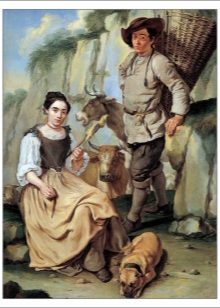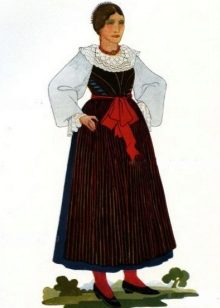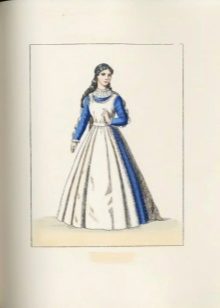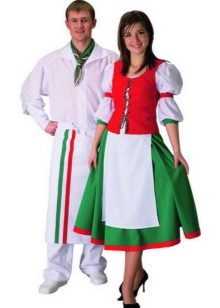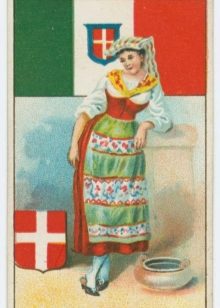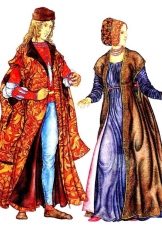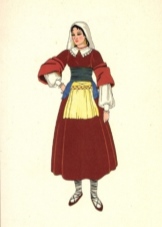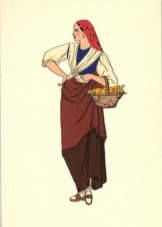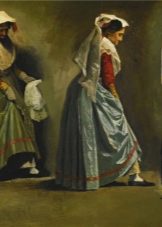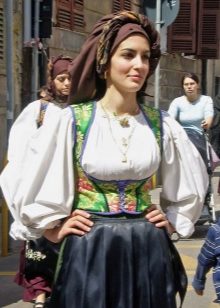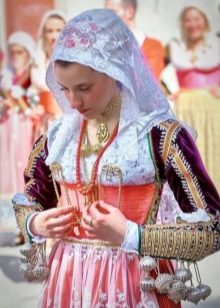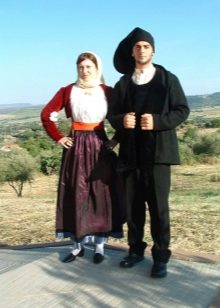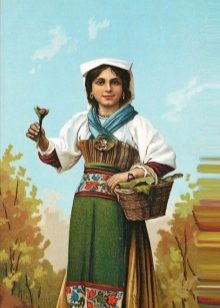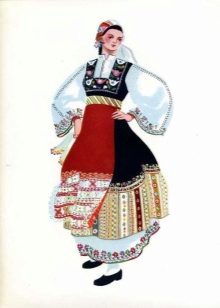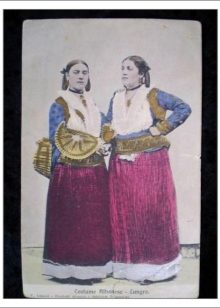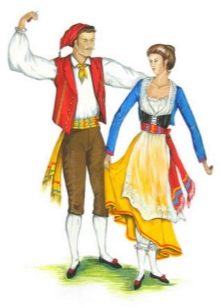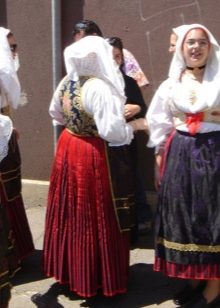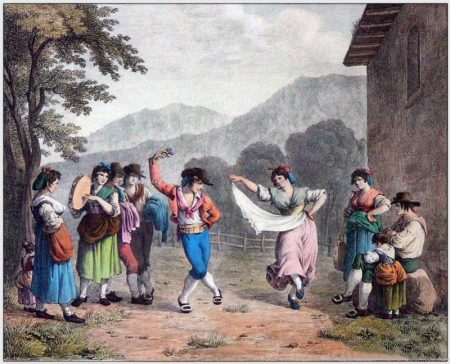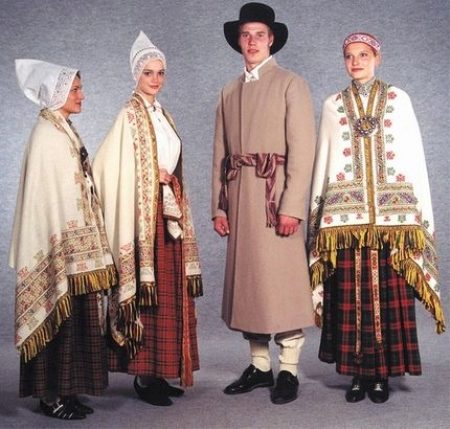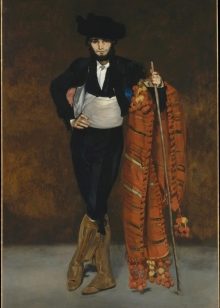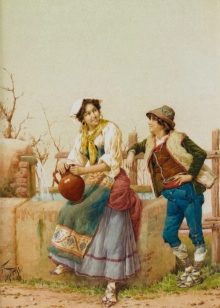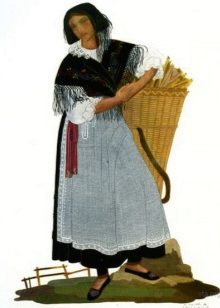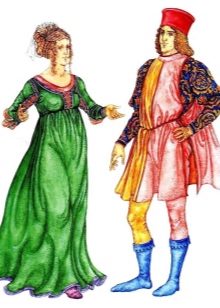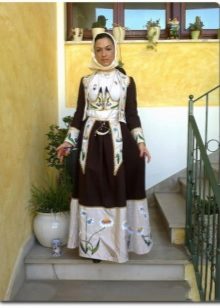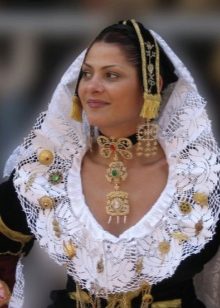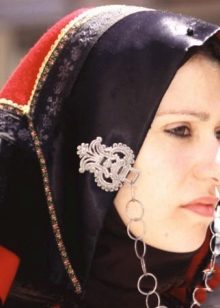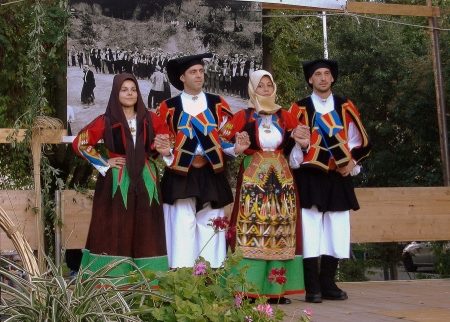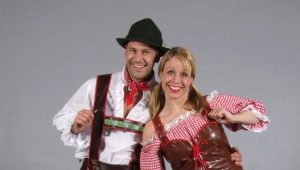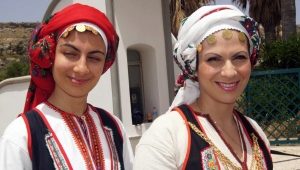National costume of Italy

A bit of history
The national costume of Italy is a collective image, as it was formed over many years and the external image was greatly influenced by the countries of Byzantium and France. Each region, each region had its own distinctive features of costumes. It is worth noting that in the 15th century Florence was the trendsetter of Italian fashion, in the 16th century Venice took its place. Since during this period of time the French fashion had a significant impact, simplicity and smoothness in clothes appeared, it became normal proportions, without excessive plumes and dangling sleeves. For the manufacture of clothing used road fabric: velvet, silk, brocade with embroidered gold ornaments. The costumes were bright, cheerful. The shoes were soft — sandals or button-down boots; leather boots were used for riding.
In the 16th century, the style changed dramatically. The black colors became dominant, the cut became simpler, it showed a split in society and wars between the cities. In 1529, Italy was captured by Spain, so Spanish motifs began to dominate in the clothes: a frame for clothes, a deep cleavage, red color, puffy skirts in pleats. For the first time in the 16th century stockings, underwear and lace appeared. Winter in Italy began to use clutches of silk with fur. Shoes during this period were soft, sometimes with high soles.
Features
National costumes of Italy are popular mainly in the south of the country. A men's suit consists of short pants up to the knees, usually they are fastened with buttons on the bottom or tied with special laces; white wide shirt with embroidery on the collar, as a rule, it is hand embroidery; Sleeveless vest or short jacket just below the waist. One of the main elements of the national women's costume of Italy is a long and wide shirt, similar to a tunic, with wide sleeves, and a long pleated skirt. Shirts always have embroidery or lace, as a rule, it is handmade embroidery of lace motifs. On the skirt was a contrasting bright border. Mandatory is also a bright, long apron, to the hem of the skirt. Later, skirts were also embellished with hand embroidery.
Colors and shades
The colors in the national costume of Italy are bright and cheerful. Mostly, these are bright red, bright green colors that play in contrast with violet, blue, white, with golden patterns. White color is necessarily used in men's and women's shirts.
Fabric and cut
As mentioned earlier, richer residents used expensive fabrics in clothes: brocade, velvet. Poor people wore clothes made from natural and cheap fabrics. For example, bleached sheets of wool, very rarely silk. The fashion was a multi-layered dress, it was thought that the more layers you wore, the more wealth you had.
Varieties
There are costumes for solemn holidays and for everyday life. Festive costumes are brighter, they are decorated with multiple embroidery with gold threads, gold jewelry with bells. For everyday life, they used calmer costumes in which to work. Children's costumes are very similar to adult clothes and there are no particular distinctive features. Sardinia has a huge number of varieties of national costume, almost every city has its own characteristics and characteristics. The most common colors of the costumes here are deep blue, decorated with red ribbons.Women have a skirt embroidered with flowers, men have unusual buttons on shirts.
The Alto Adige region is bordered by Germany, so there are varieties of clothing here that are specific to this country. Only in formal clothes could one meet bright clothes. In everyday life used dark, black tones. Sometimes a scarf was tied around the neck, this tradition has reached our time.
Accessories and shoes
As a rule, there is a hat in the men's national costume, now it is called “beretto” and is still popular in the southern cities of the country. Women use white caps with large capes or a headscarf. National shoes are still made by hand in some parts of Italy. For example, boots on a wooden sole with leather socks or soft shoes made of cloth. Decorations were and are a mandatory attribute of the national costume. Men used rings and chains. Women used pearls, they decorated hair. And also put on necklaces from large pearls with precious stones.
Modern models
Modern styles of national Italian costumes are significantly different. Although, the essence remains the same, the main elements migrated into modern life. For example, long skirts and aprons, shirts, caps, men also had short trousers, caftans, hats. Only materials began to use more modern: flax, cotton. Embroidery on shirts and skirts is rare, sometimes it is replaced by multi-colored prints. The head and neck scarves are still worn in some villages of Italy.
